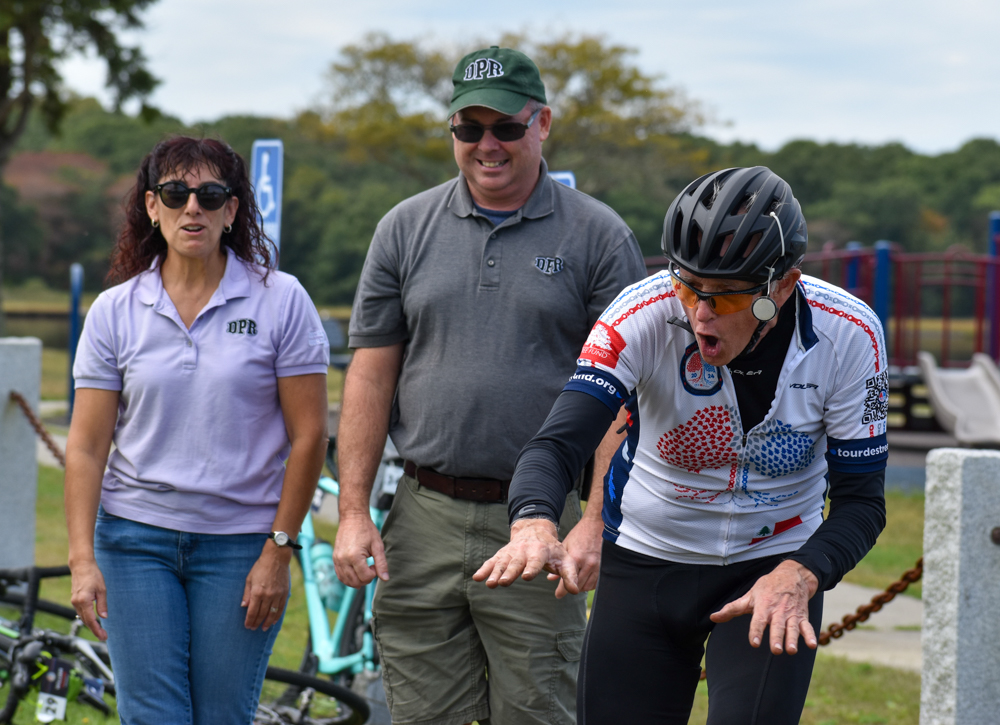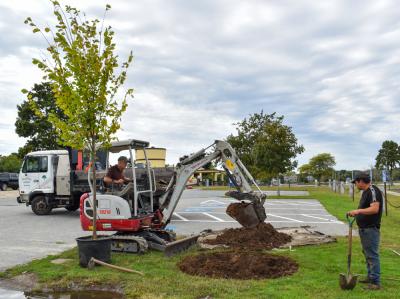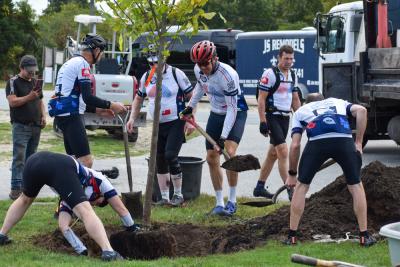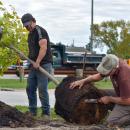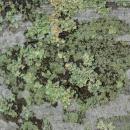Cyclists pedaling for petals make a pit stop in Dartmouth
Every true tree ceremony begins with a “great big beaver tail clap,” said Clement Desjardins, one of the 79 cyclists who traveled 430 miles in the 2024 Tour de Trees, planting seven trees in communities along the way, including one in Dartmouth.
Gathered in a circle around the newly planted American Elm at Apponagansett Park on Friday, Sept. 27, some of the riders showed Dartmouth how it was done.
“Grow tree, grow!” the crowd chanted as they made in-sync gestures toward the tree. “The roots, the roots, the roots are on fire!”
All before breaking out into song, singing, “All we are saying is give trees a chance.”
The ride, which raises money for the Tree Research and Education Endowment Fund, began in Stamford, Connecticut on Monday, Sept. 23 and ended in Providence on Friday.
The fund is a nonprofit aimed at supporting scientific discovery and sharing new knowledge in the fields of arboriculture and urban forestry, with the ride serving as its main fundraising and community outreach event.
The ride brings in cyclists from all around, including the United Kingdom, Canada and states across the U.S.
Jonathan Cain, TREE Fund communications and engagement manager, said the ride takes place in a different location every year, adding they like to pick locations such as small towns because they might be places people “wouldn’t typically go on vacation.”
Some of the location ideas the cyclists visited this year came from Desjardins, who is from the area, which is how the Tour ended up at Apponagansett Park.
“He was like, ‘I know this place. We’re going to this park. We’re going to go to The Bucket — it’s going to be great,’” Cain said.
The riders slept in a different hotel every night as they made their way across the South Coast and the organization had an additional 15 to 20 people helping out as support staff, he said.
“I love seeing everyone out here,” he added. “Everyone’s having a good time.”
Rebecca Amaral, Dartmouth recreation coordinator, said the spot where the tree was planted, which was next to the basketball court, had one that died “a long time ago” after getting damaged in a storm.
Also attending the tree planting was Ann Parsons, chair of the Dartmouth Tree Committee, who pointed out the variety of trees that exist in the park, including a type of maple and honey locust trees, which are known for their feathery compound leaves that cast a lacy shade.
She also observed that many of the trees had the lichen effect, which is the green stuff that grows on bark.
“It’s kind of a mystery,” Parsons said, adding how while some believe it's a sign of clean air, it is often found on older, more “sickly” trees.
“It’s always sort of a mixed bag,” she said.
With the location being a popular summertime spot, Parsons said she can imagine visitors are trying to get under the shade of the park’s trees as much as possible — so the more trees, the better.
She repeated one of her favorite sayings, “The best time to plant a tree was yesterday.”



